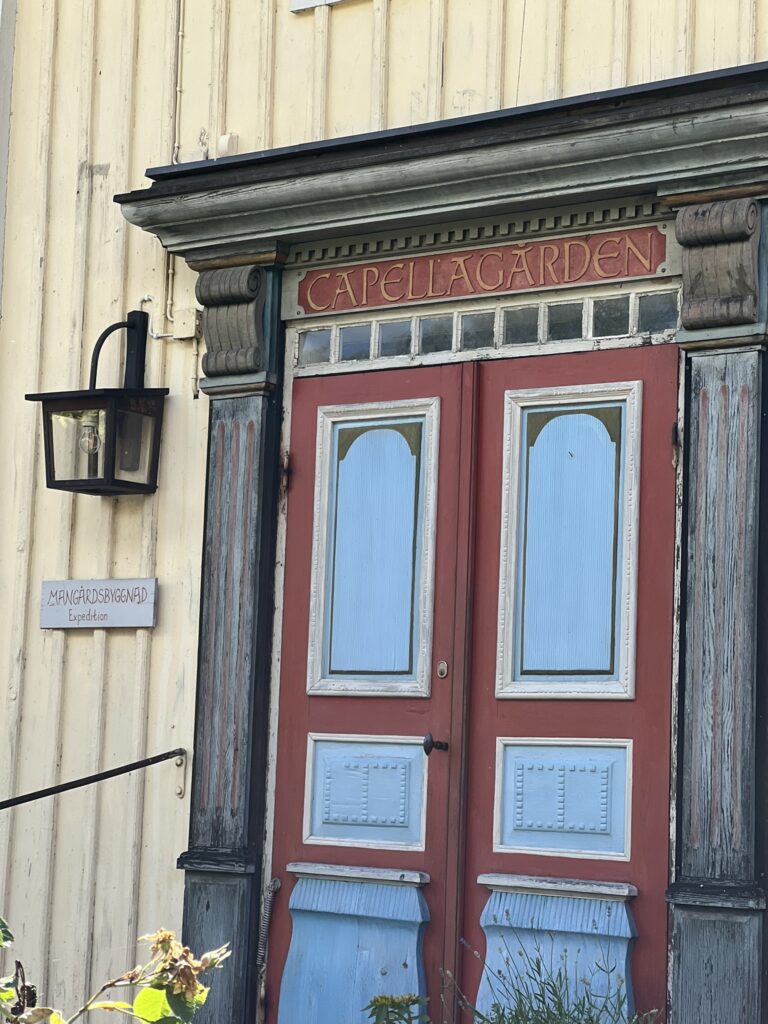
Capellagården, a folk crafts/ art school on the island of Öland, arranged with Sarah from The Tour Studio for a special course to be taught in English. I know Sarah through the International Citizens Hub and so had the opportunity for a spot in her linen workshop. The other participants all came from the US, Canada, Germany and Australia. Most of us stayed in Kalmar, on the main land and drove out to Öland daily. The weather was perfection and we were able to do most of the tasks outdoors. It should have been obvious that turning flax into linen would be hard work, but I underestimated how tired I would be! Some of the group stayed late in the evenings to continue the spinning process or to work on their weavings, however I found it necessary to return to the hotel where I relaxed and recovered for the next days’ adventure. The tour included a couple of workshop and museum visits. It was a nice balance of crafting, learning, exploring the gardens, and excursions. The food was excellent at the school and not bad at the hotel either. I enjoyed not having to think about what to buy or cook!
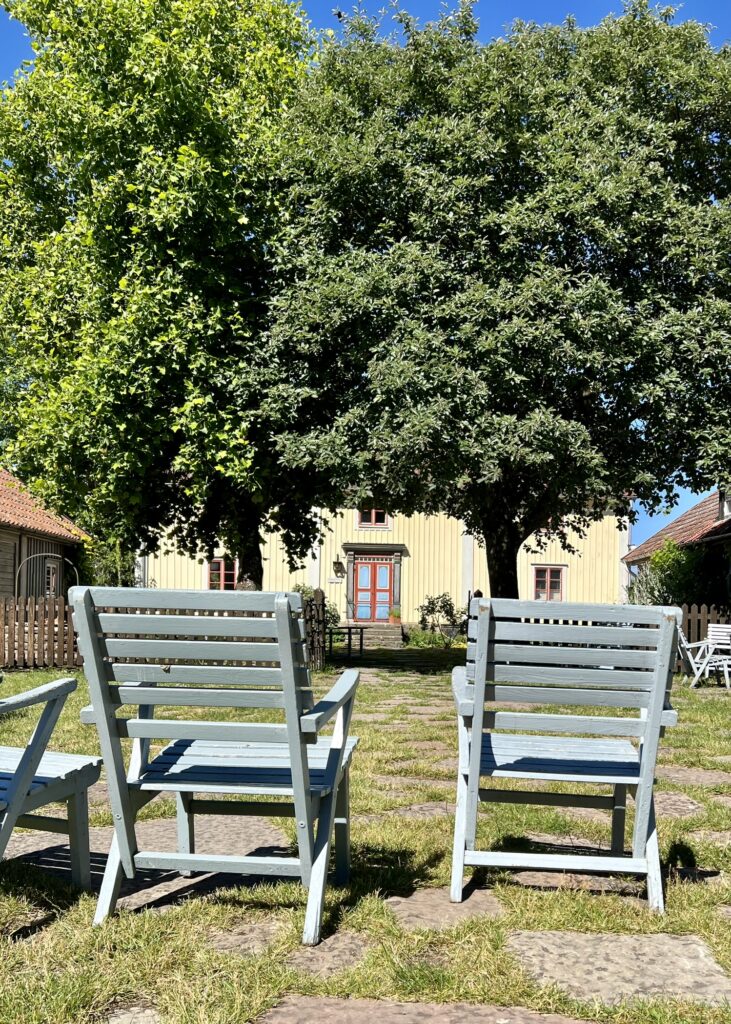
Capellagården has 27 buildings designed to foster knowledge of many arts and crafts, including one of the best ceramics studios in northern Europe. On the last day we were were able to have a tour of all the summer programs with an overview by the participants. There were students of all ages and backgrounds, from middle schoolers crafting birch chairs, to master gardeners and professionals looking to enhance their skills or to be inspired by the surroundings. I would love to return for the course on Color, but at this time it is only offered in Swedish.

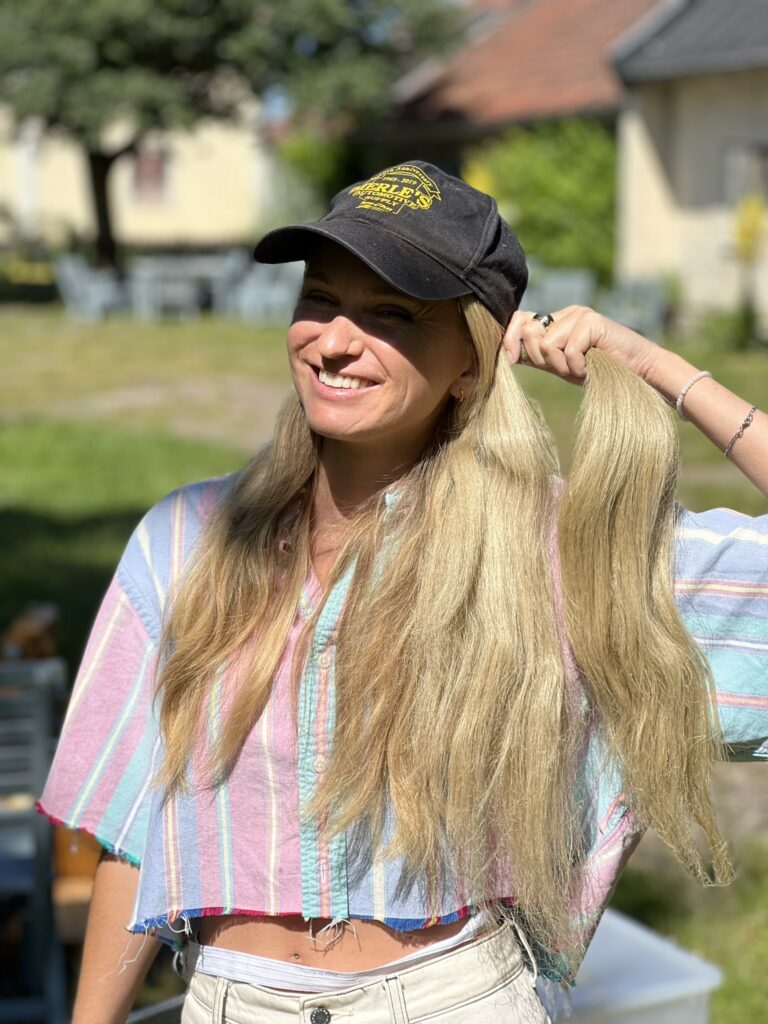
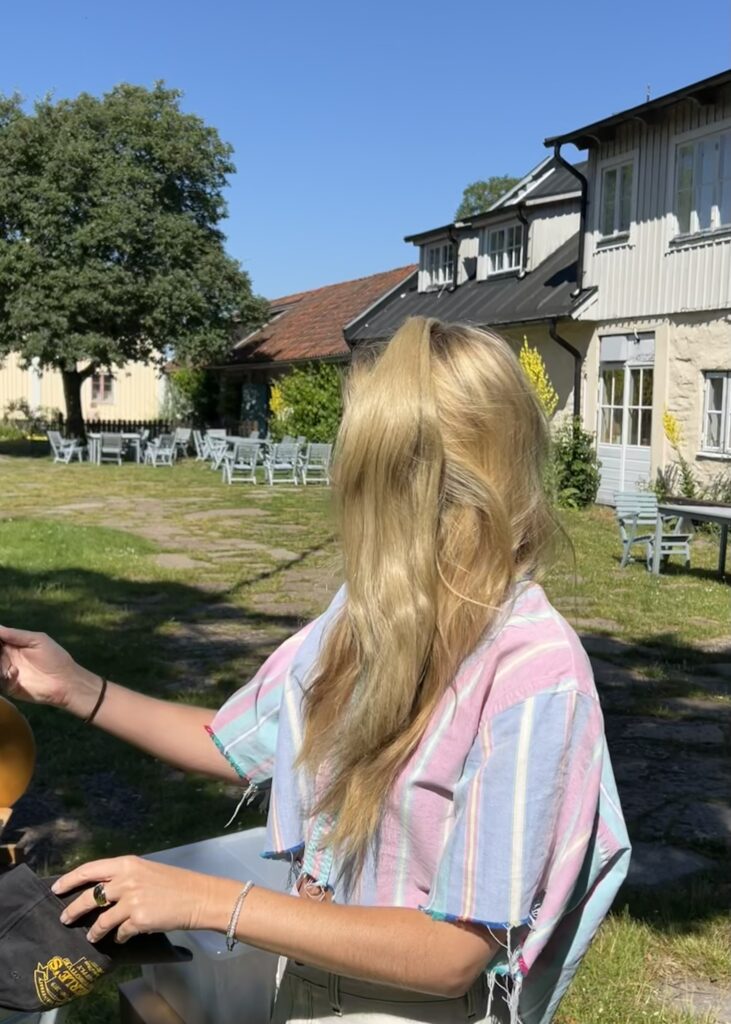
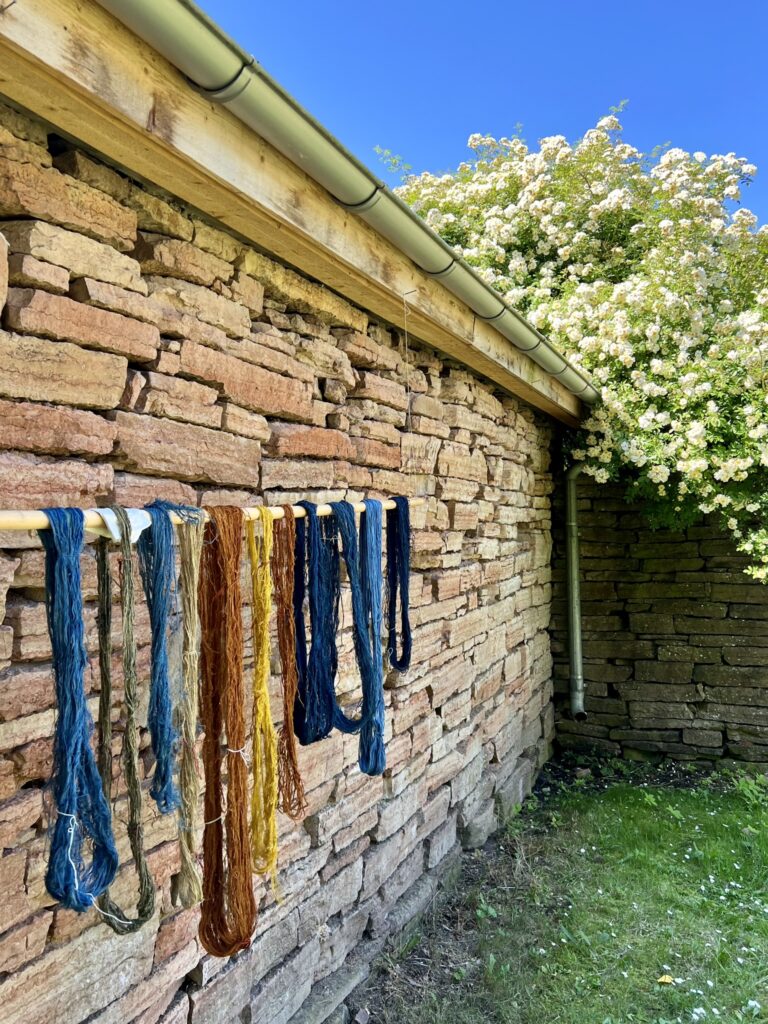
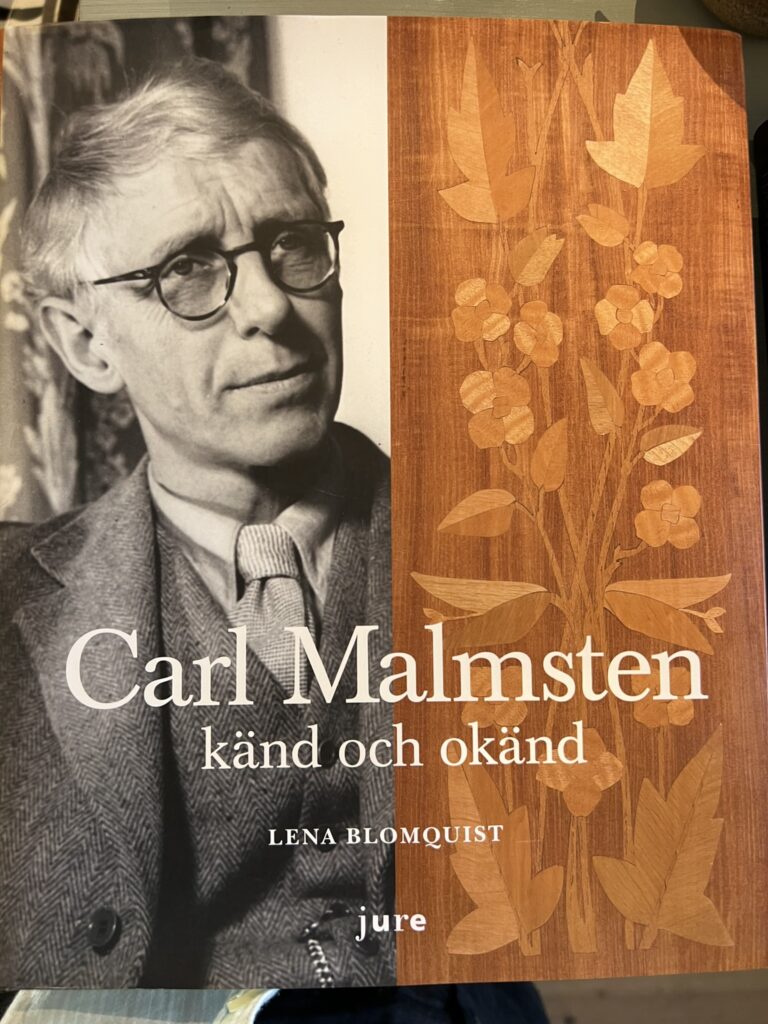
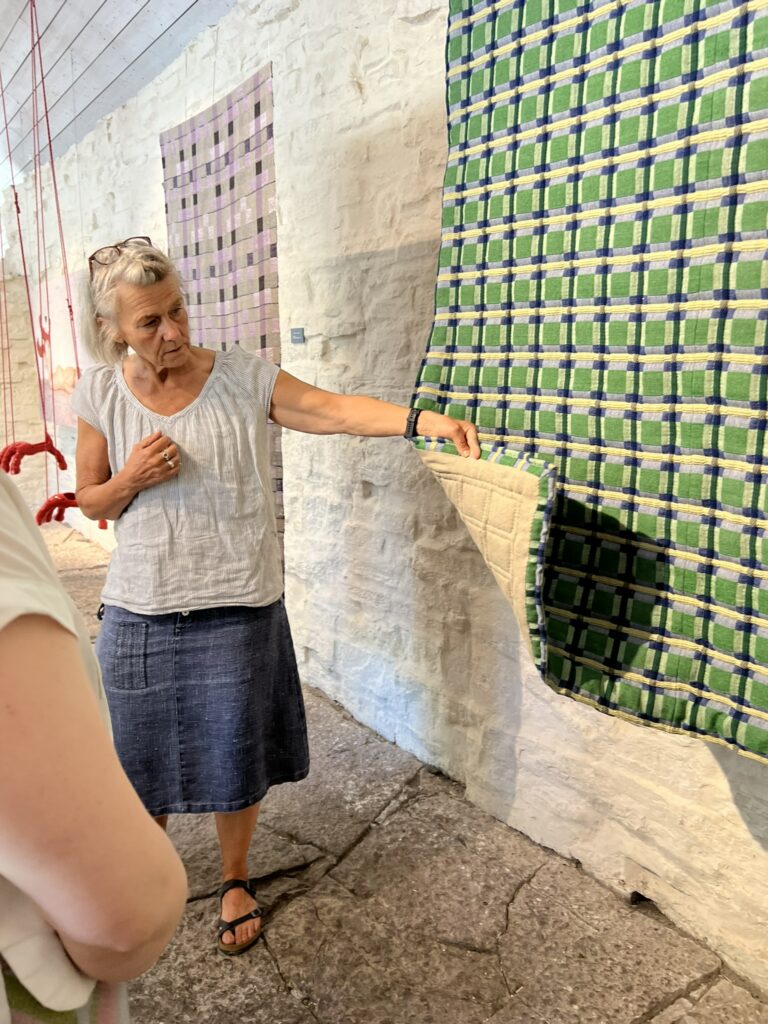
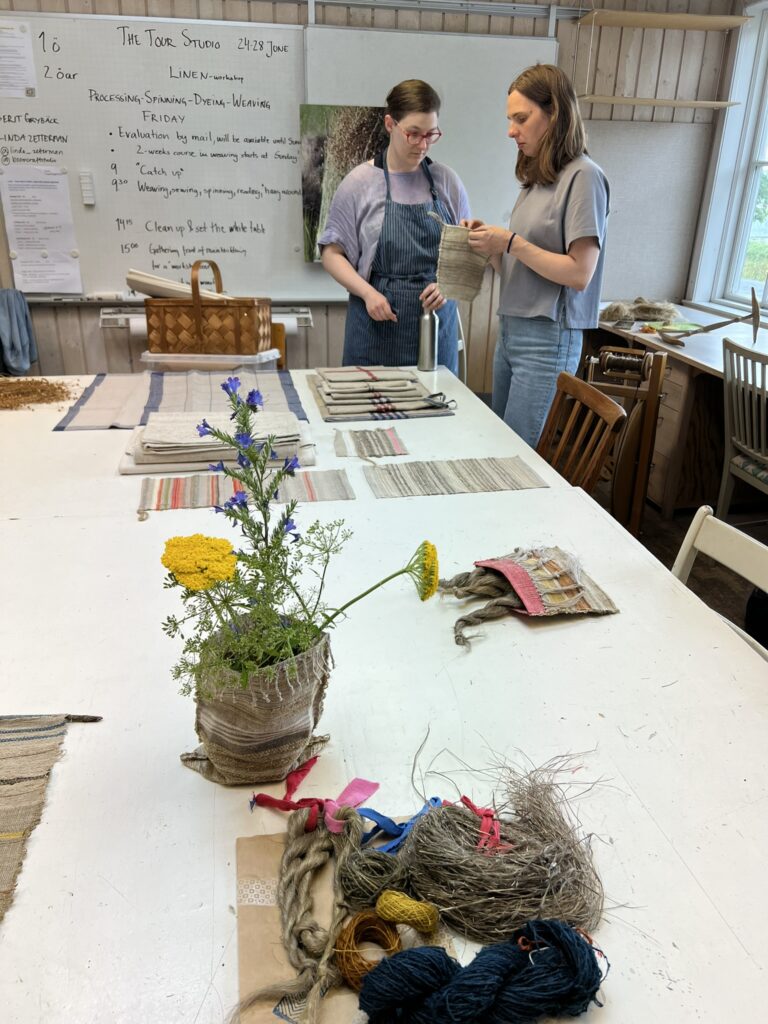
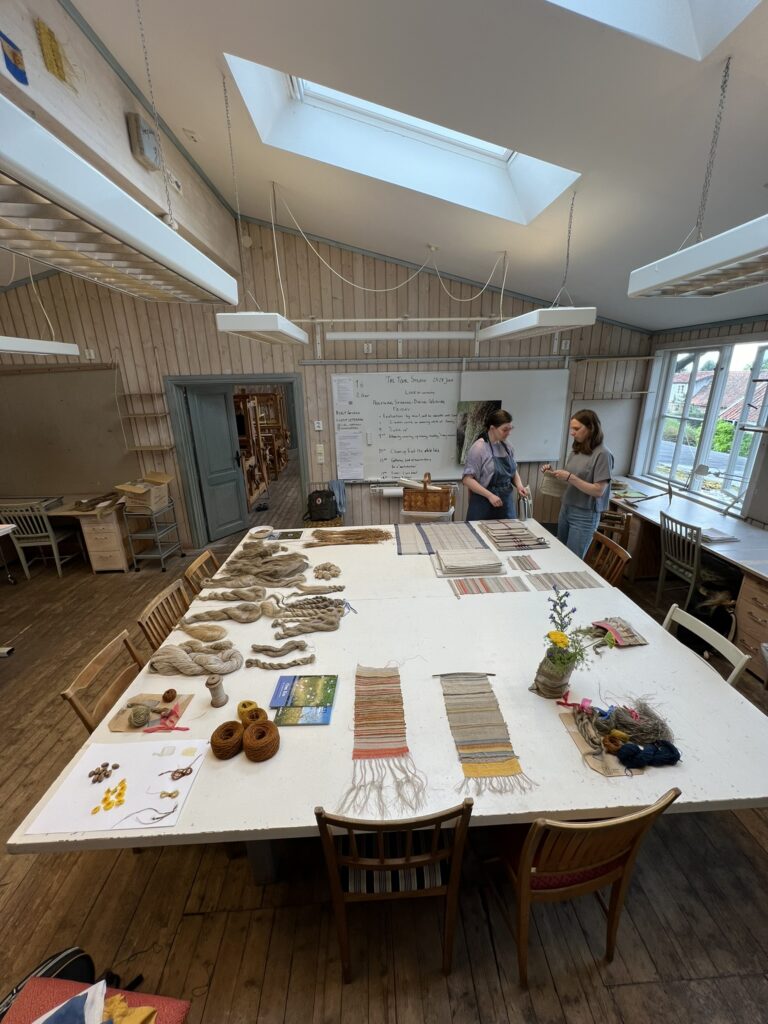
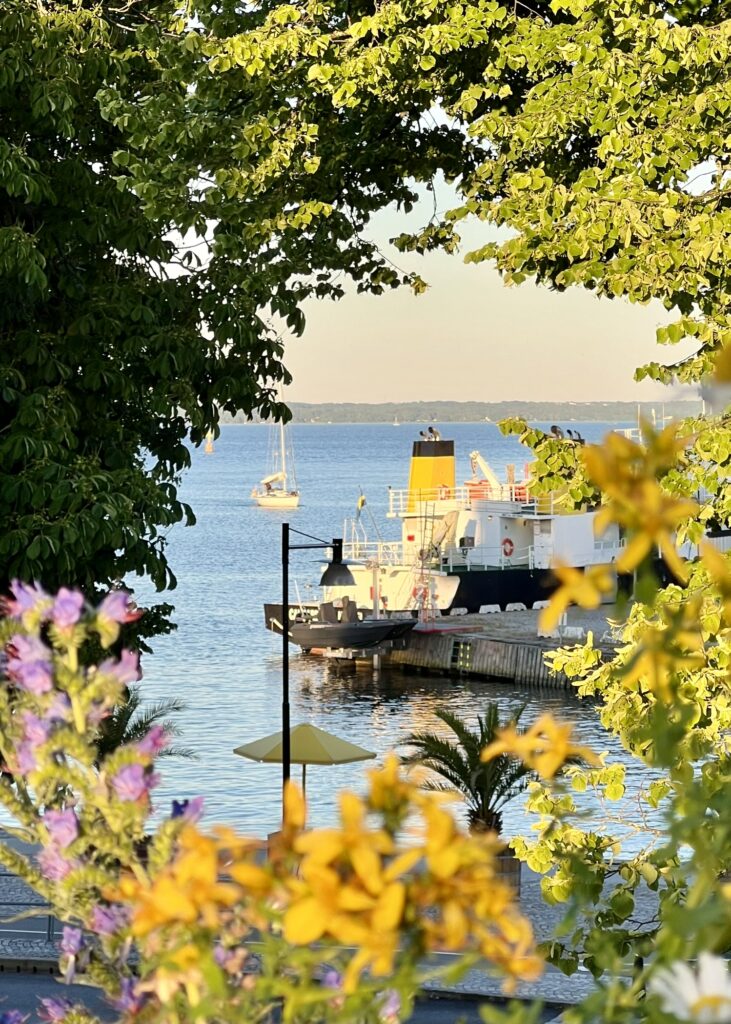
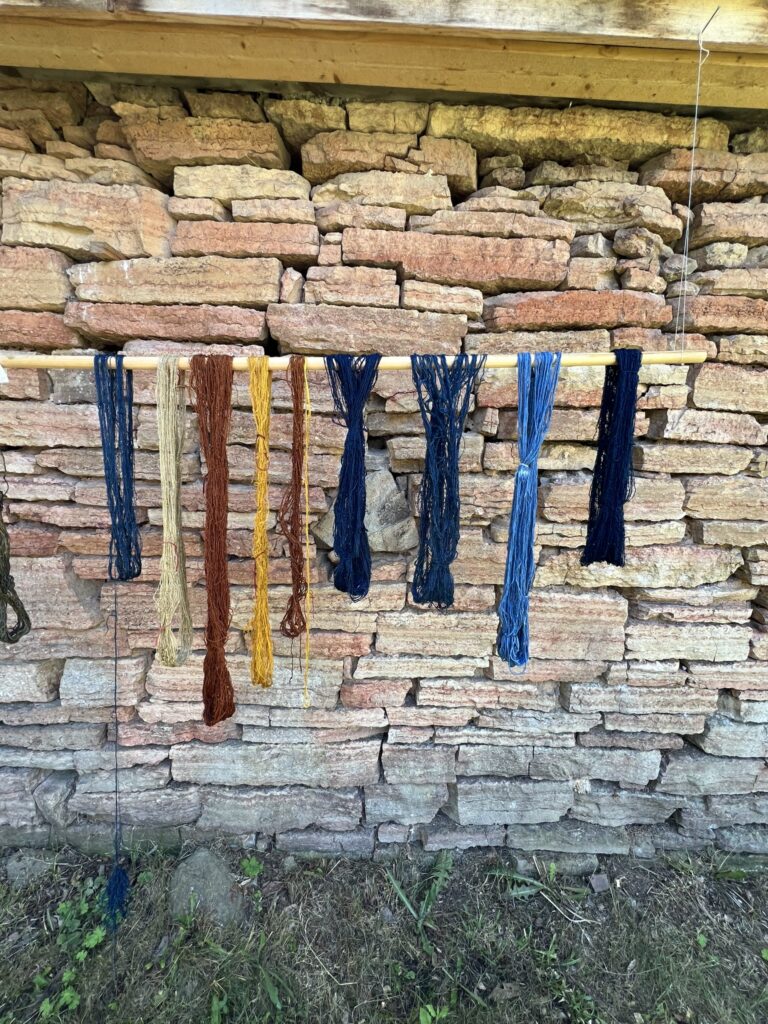
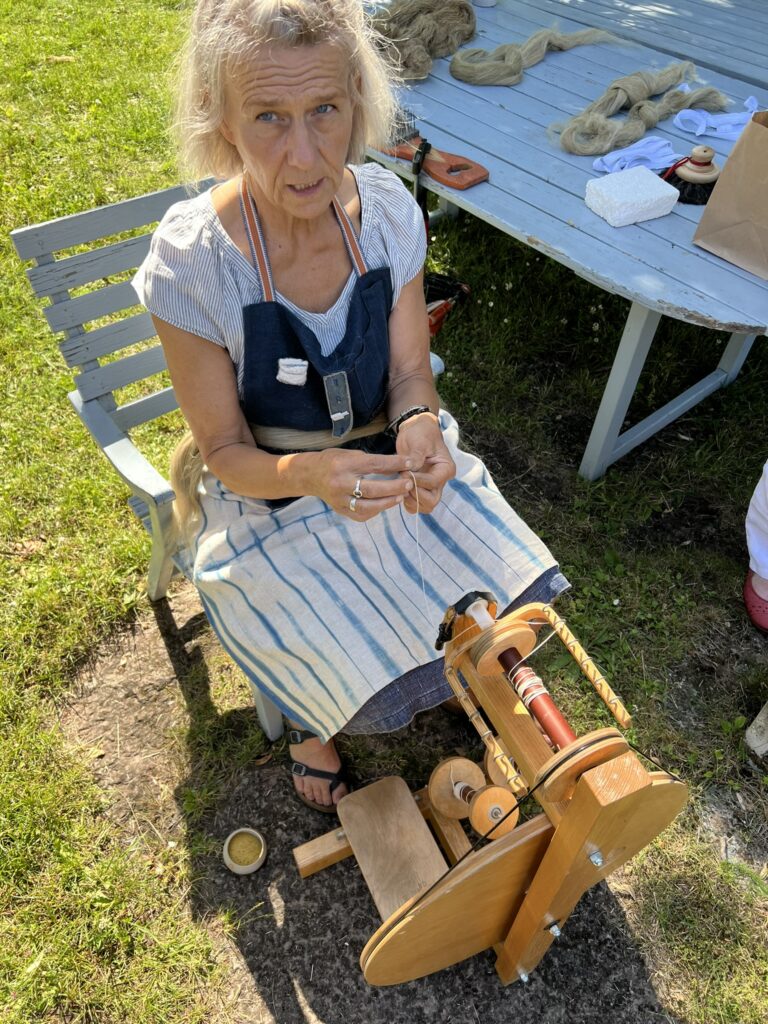
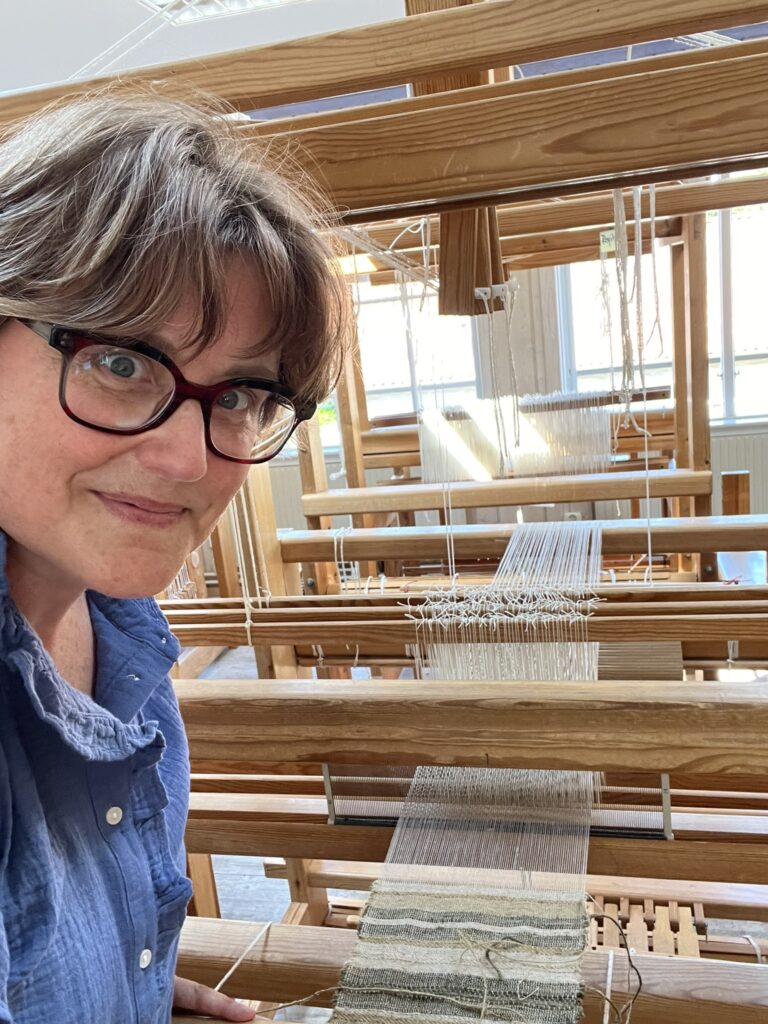
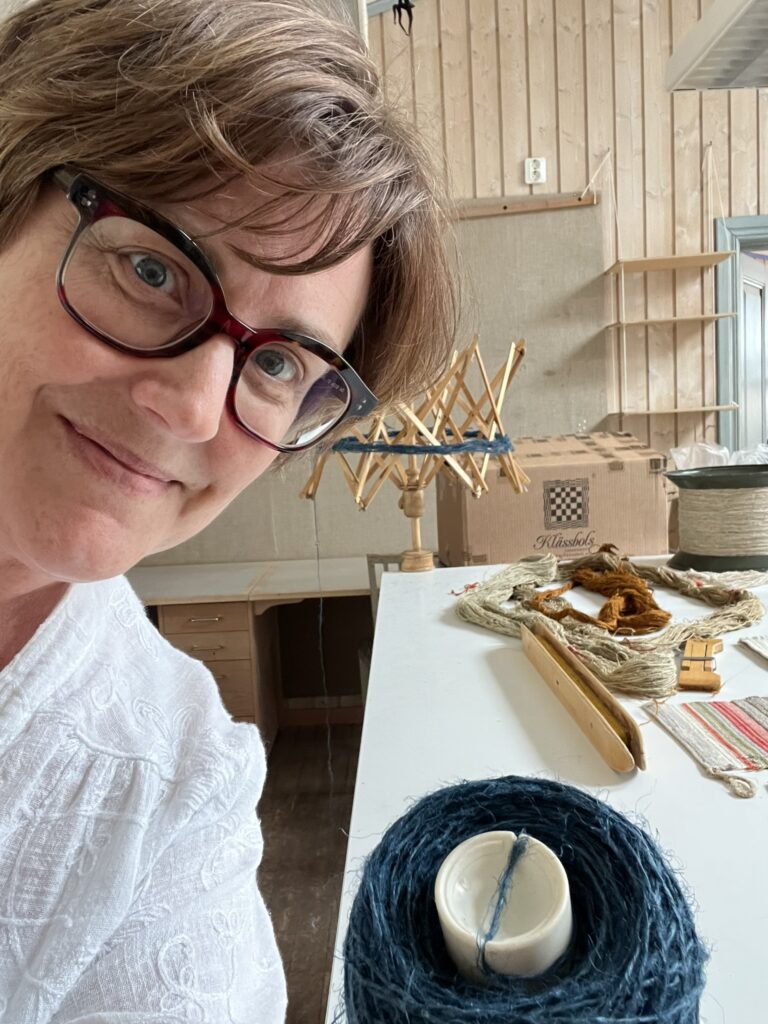
Spinning was the most difficult thing for me. I wasn’t quite able to get all the parts moving together and peddle with the right amount of force while holding, moistening and pulling out flax strands to create long unbroken twists of fiber. Luckily several of my group were experienced spinners and weavers so they managed to make enough to share and we could supplement with pre-spun. My contribution was mainly with the lin seeds, extracting the seeds from the pods, winnowing away the husk and then packaging them in recycled paper. I also very much enjoyed making skeins.
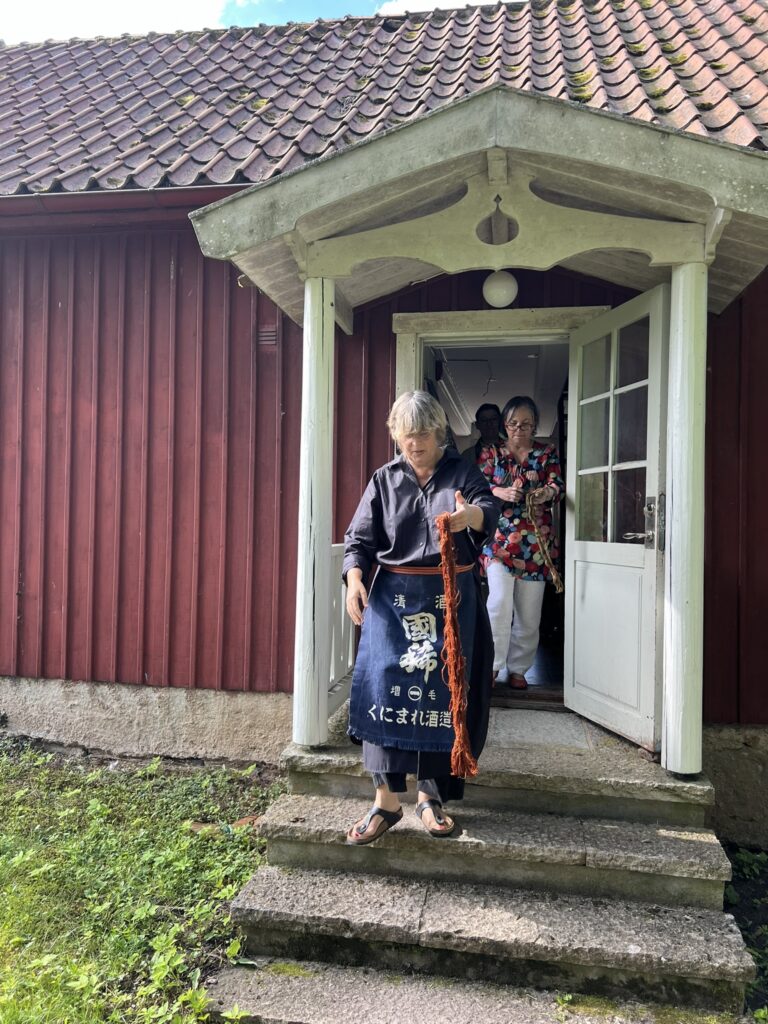
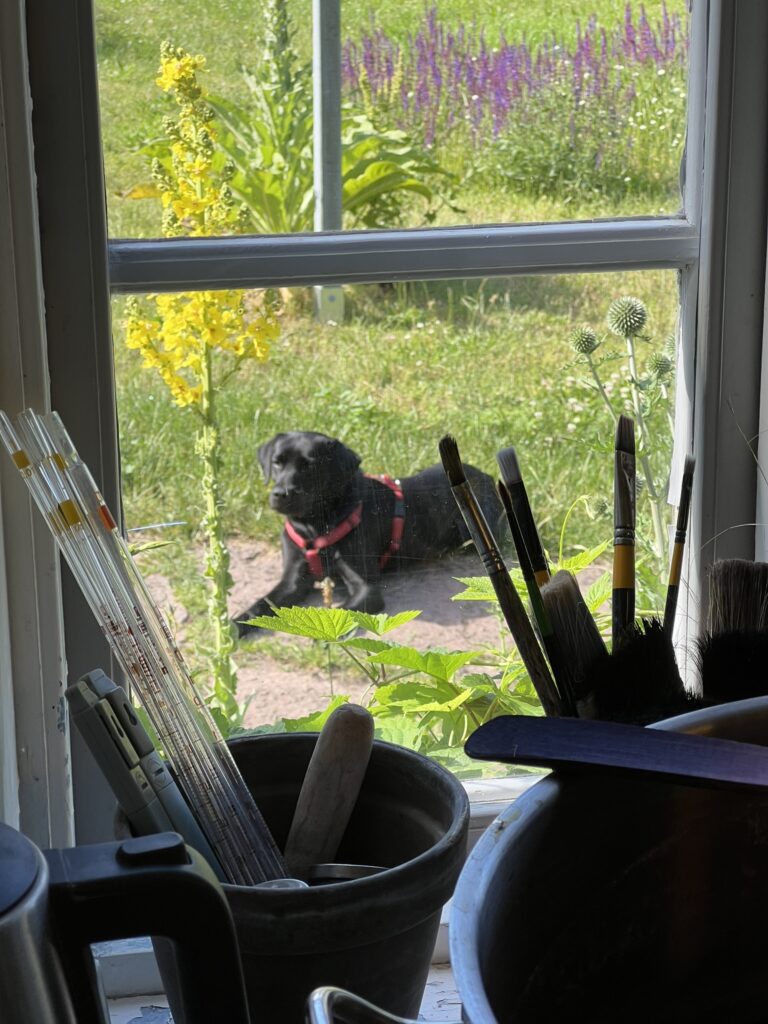
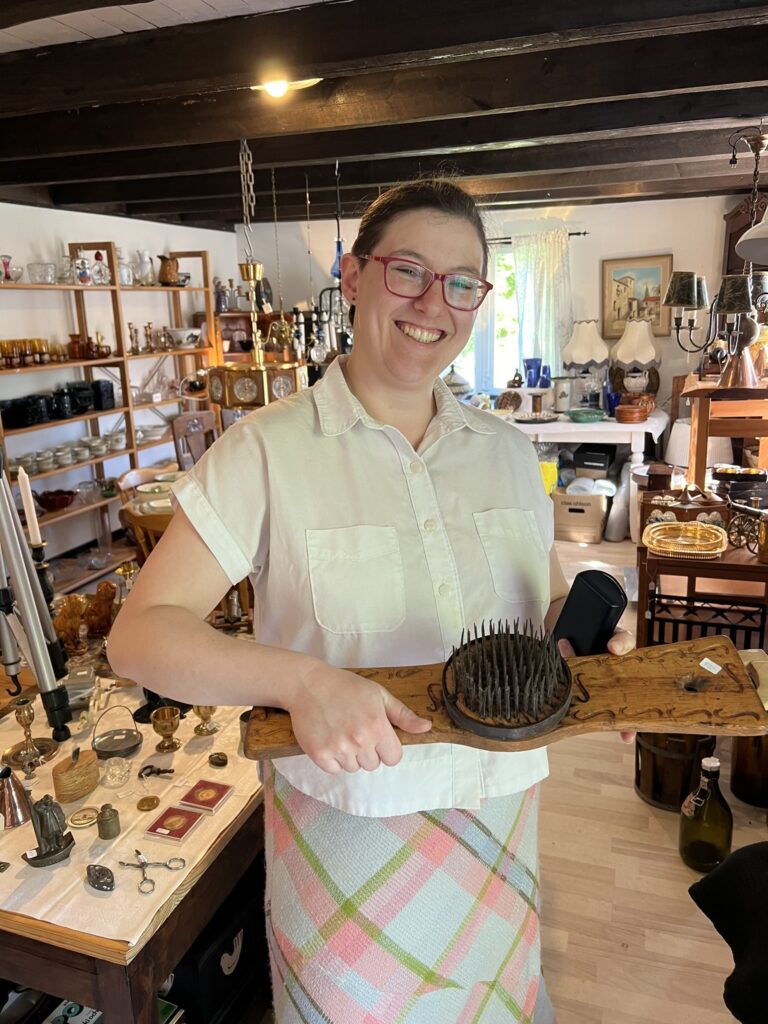

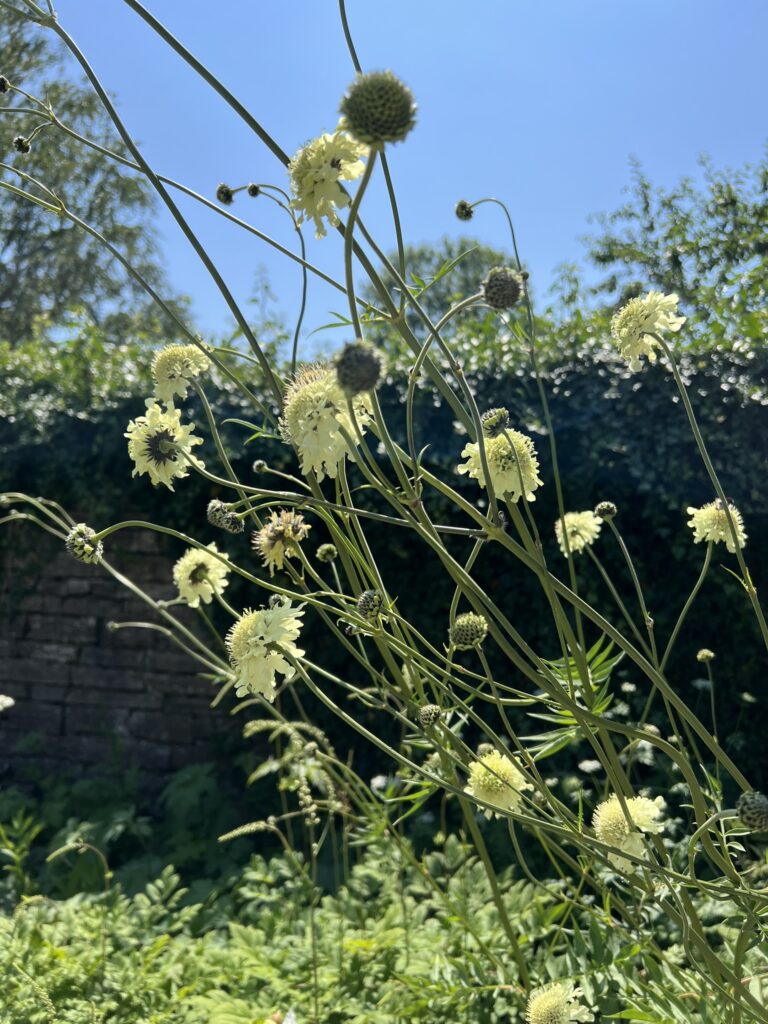
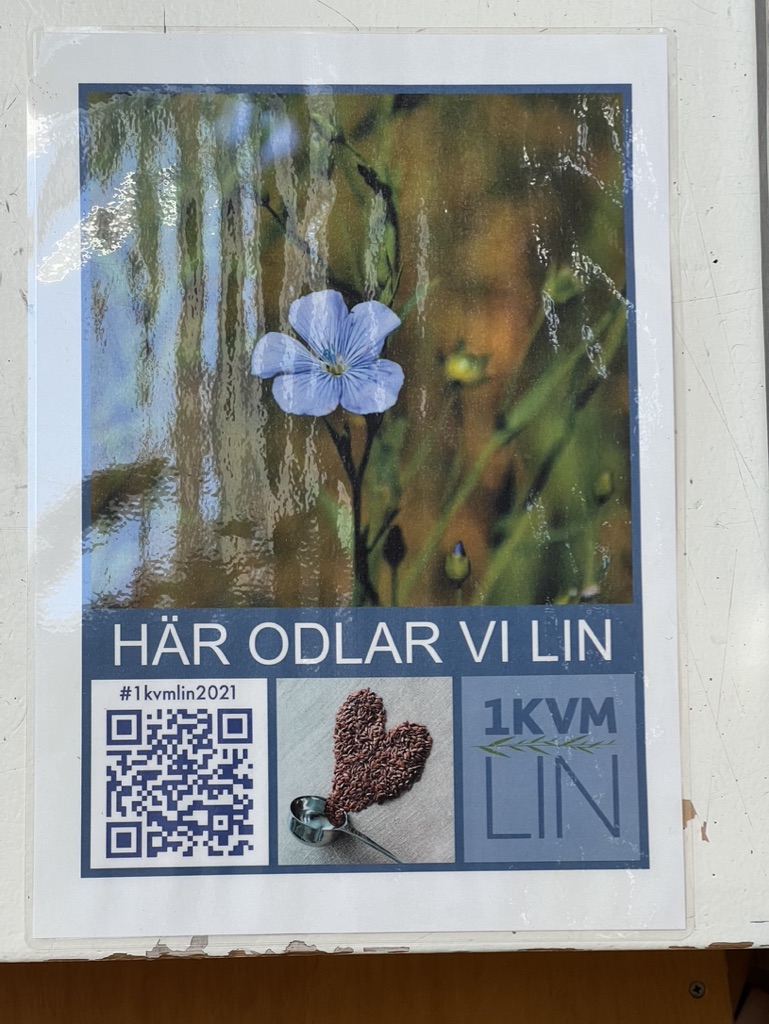
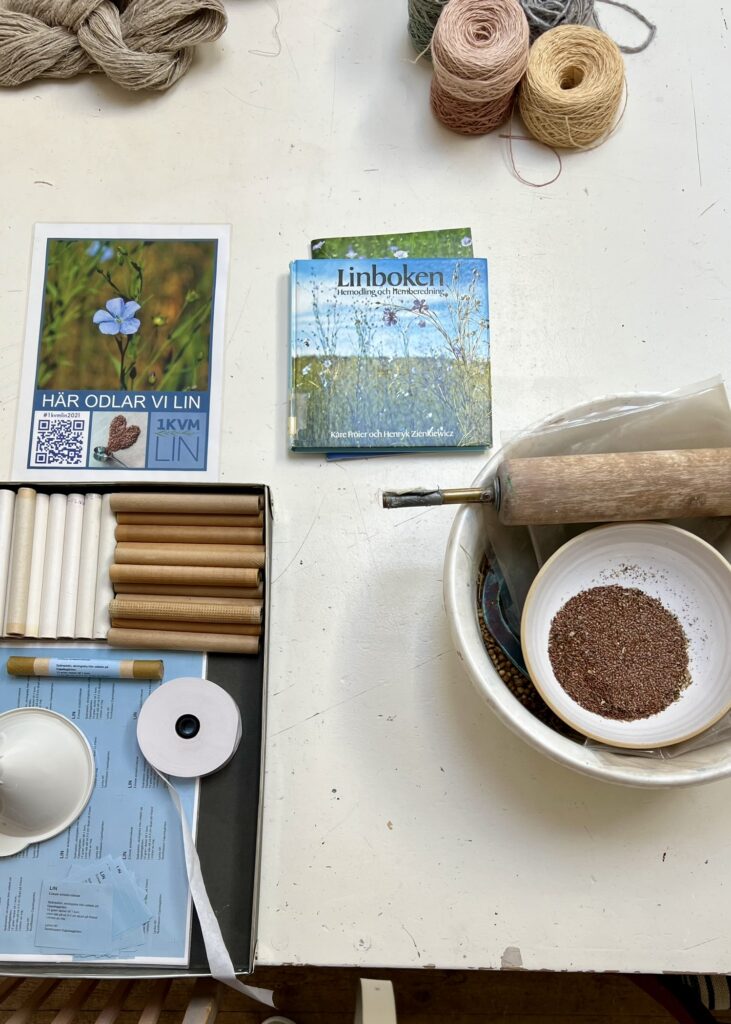
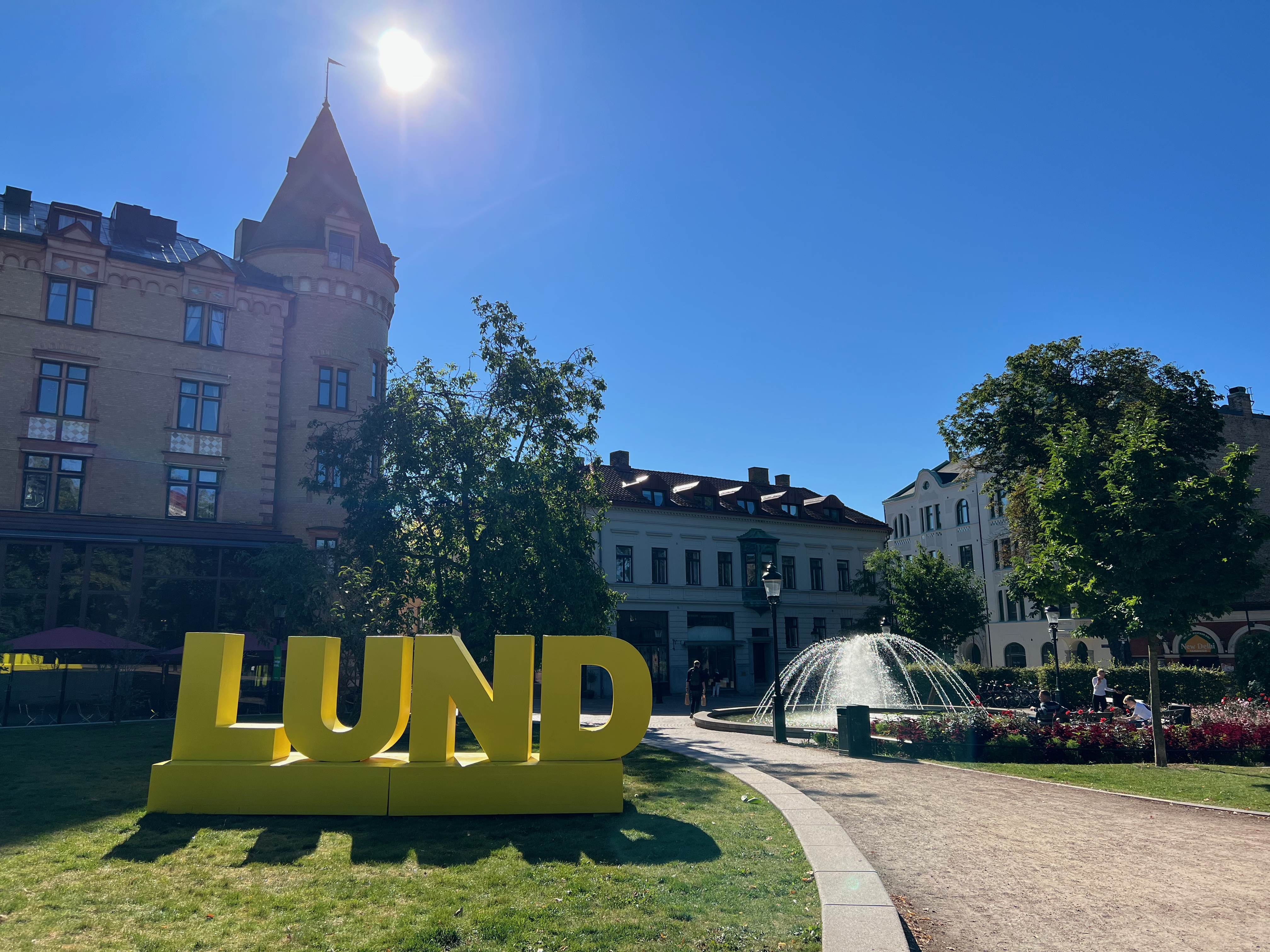
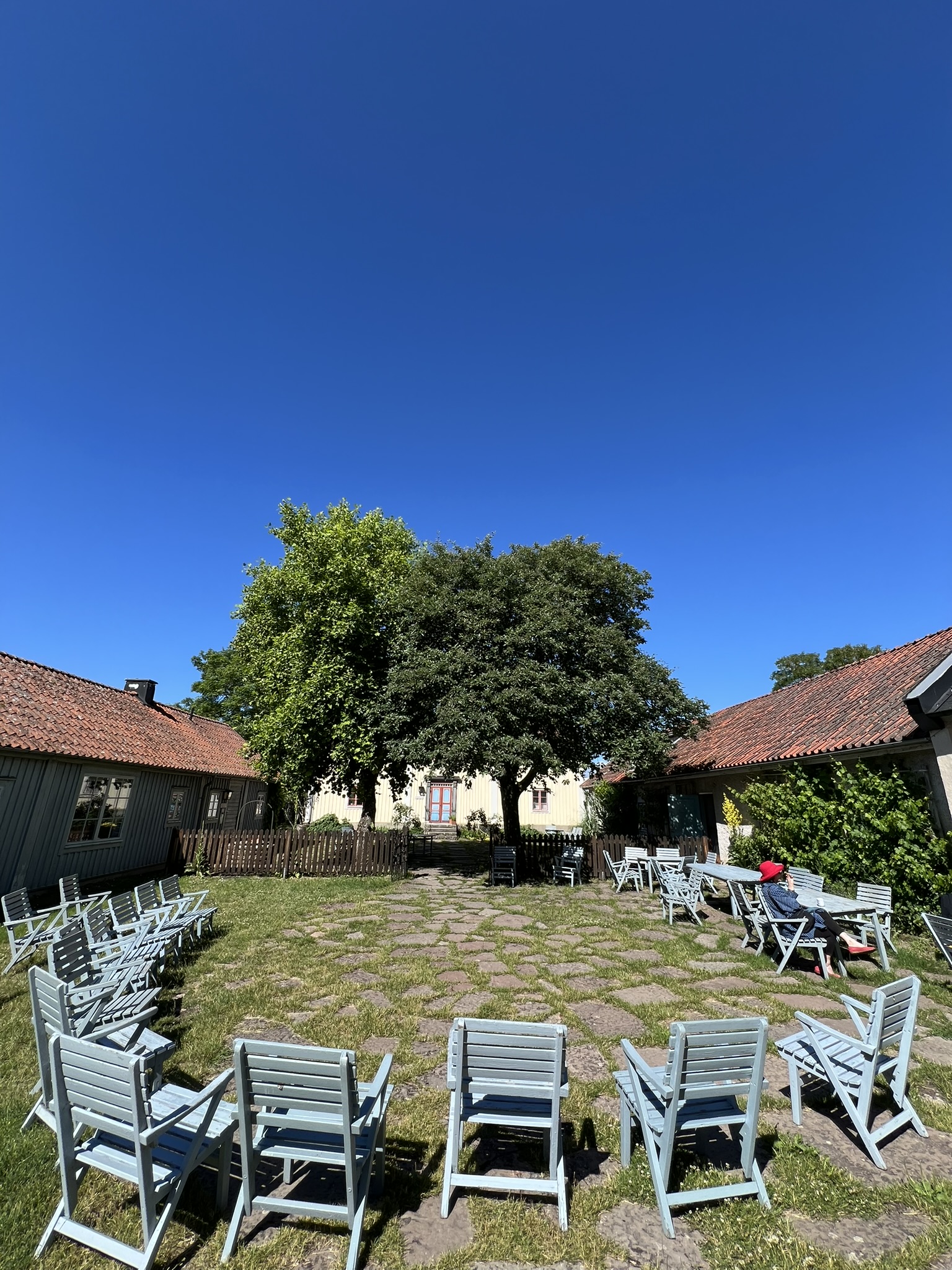
Leave a Reply